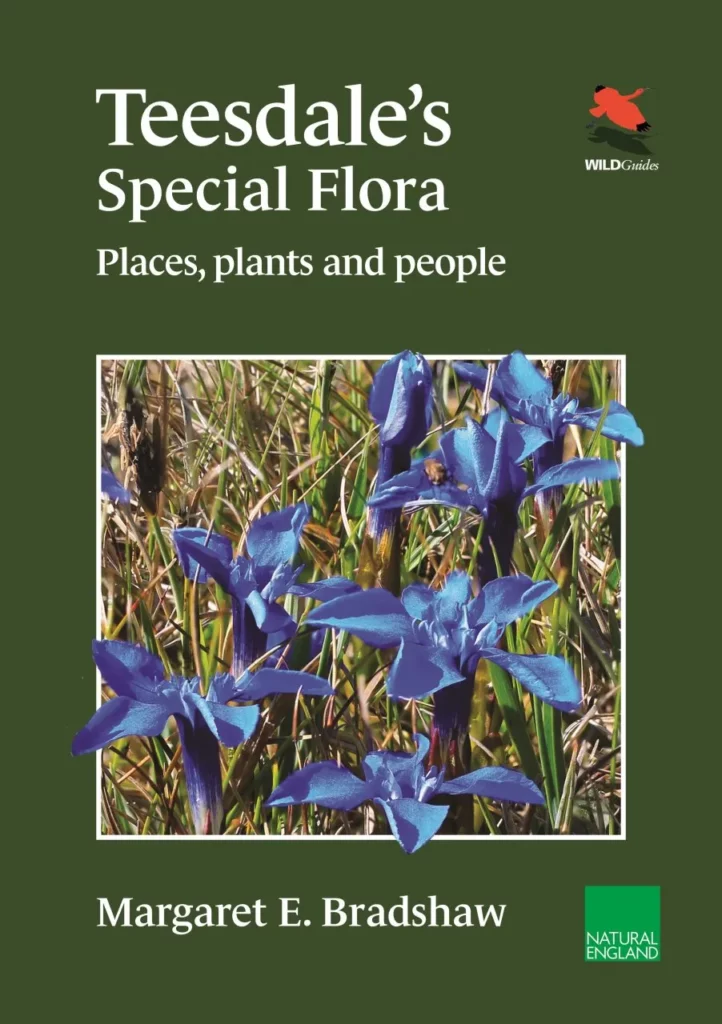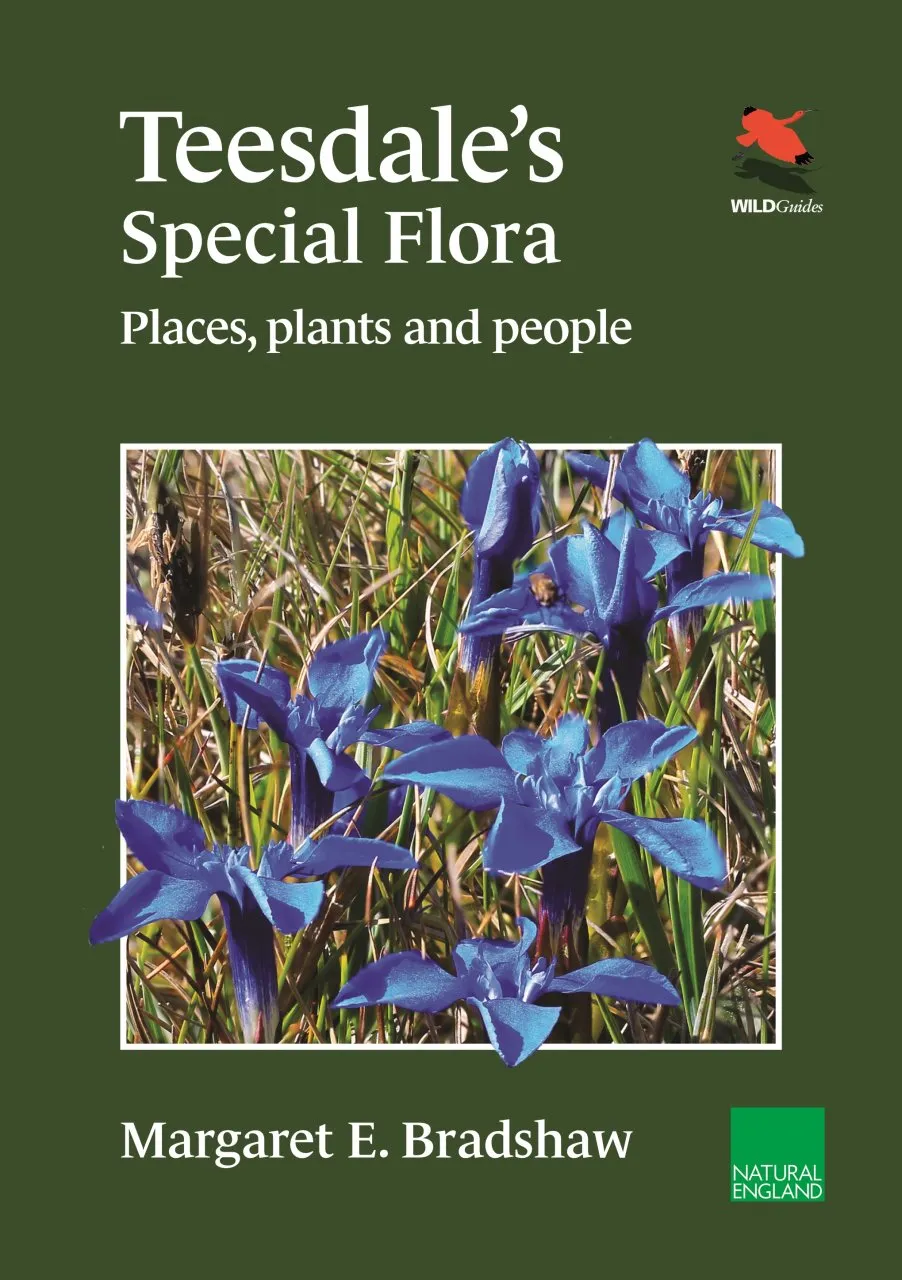Upper Teesdale is a place blessed by nature with far more than its share of rare species, especially plants. Its surrounding fells are the coldest, highest and probably bleakest places in England. The dale is the meeting place of plants at the limits of their range, north and south, where arctic and alpine species touch others more at home in continental or even oceanic climates. The beautiful Spring Gentian is Teesdale’s most iconic flower, along with two that have Teesdale in their names: the Teesdale Violet and the Teesdale Sandwort. In the botanical world, the dale is associated with one person in particular: Margaret Bradshaw, who has been studying the local flora in minute detail since (wait for it) 1950. Aged 96, she is still active, walks and rides in the dale, and now she has written this book.
This is an intimate botanical portrait, taking as its subject the catchment area of the upper Tees from Cotherstone in the east to Cross Fell, the highest hill in the Pennines, to the west. Roughly in the middle lie two famous hills, divided by the river, Widdybank Fell and Cronkley Fell. Much of the text is devoted to accounts of the special plants, one by one, but there are introductory sections on the ‘Teesdale Assemblage’, on the physical character of the place, on the discovery of the flora (with some images of the tombs of the discoverers), and on how the vegetation is classified. The last section goes into the chequered history of land-use and protection, including the construction of the notorious Cow Green Reservoir at the old Weel of Tees in the 1960s.
One could quibble about the selection of species. The really special plants rub shoulders with others that are comparatively widespread, but Bradshaw surprisingly omits Mountain Pansy Viola lutea, which brightens so many pastures and waysides in the dale. One might also have included two nationally extinct plants that once occurred here, and only here: the Alpine Bladder-fern Cystopteris alpina and a remarkable endemic subspecies of fleawort that resembled the South Stack Fleawort of Holyhead Island, then called Senecio spathulifolius. But it seems unkind to nit-pick. The accounts are thorough and reliable, and include some of the research findings on the biology and population dynamics of the Teesdale rarities.
The state of the Teesdale flora today is concerning. Nearly all the special species have declined. The numbers of Spring Gentian on Widdybank Fell have fallen by half since the 1970s, and by even more elsewhere. The back-up stock of plants rescued from the site of Cow Green reservoir, constructed on this hallowed turf in the mid-1960s, seems to have vanished without trace. It seems almost impossible to get the grazing right: there are either too many rabbits or too few; the fells as a whole are over-grazed, and too many of those once beautiful meadows now grow just grass for silage. This is despite multiple stewardship agreements, and the fact that Upper Teesdale and Moorhouse are two of England’s largest and oldest National Nature Reserves. With climate change upon us, and a record of increasingly extreme weather, it is hard to feel optimistic about the future. Changes in financial support to farmers might offer ‘a glimmer of hope’, as the author suggests, but setting that against all the threats which she outlines one can only say, heartfeltedly, ‘good luck, Teesdale’.

